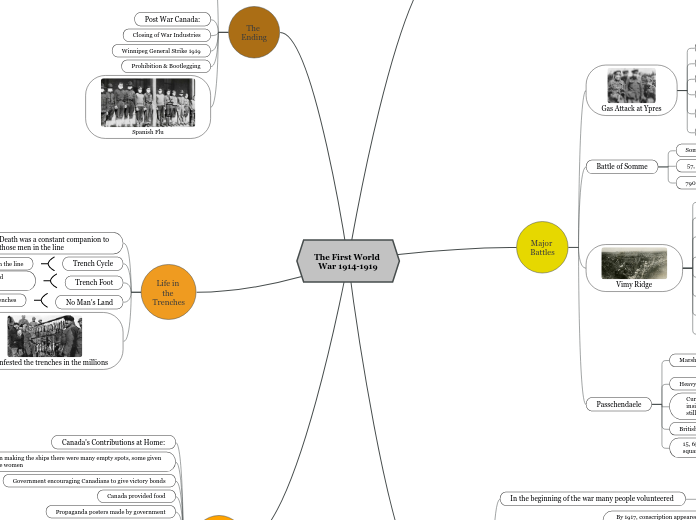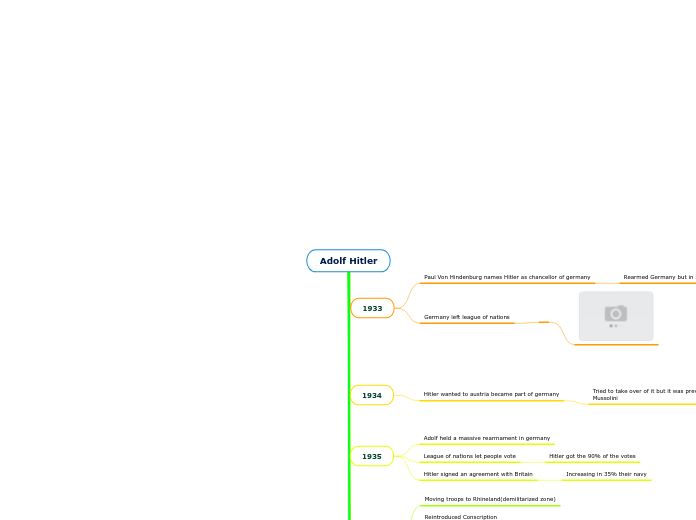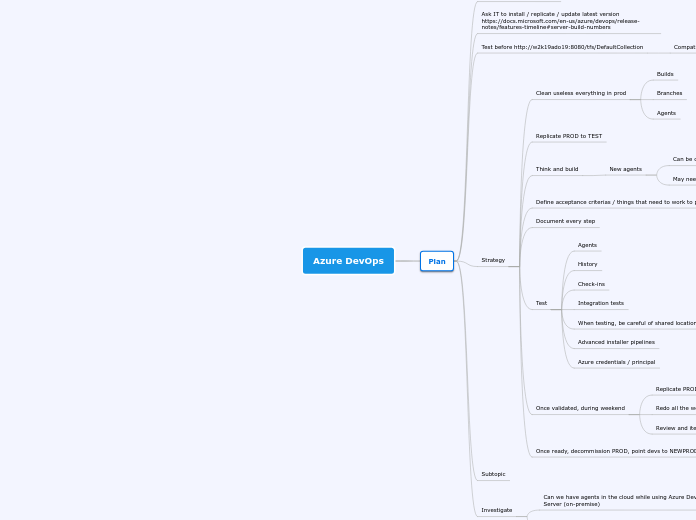Assassination of Archduke Franz Ferdinand and his wife Sophie
Even in areas where there was no action there was constant shellfire
Fungal infection of the feet that would cause gangrene and possibly amputation
"Spark" that started the Great War
Assassination
June 28, 1914
Area between the opposing trenches
Off limits during the day
After a battle many bodies would be left in No Man's Land
Conscription- A plan created by the government to force citizens to join the armed forces
These death was a constant companion to
those men in the line
Time period men would spend in the line
This amount of time would vary from weeks to months
WW1 fighting stopped on 11 November 1918
The 1919 Treaty of Versailles was the peace treaty which officially ended WW1
Militarism, Nationalism, Imperialism
Imperialism- All of the great powers were competing for colonies/territory
Nationalism: Pride and patriotism in one's nation/national identity
Militarism: A massive buildup of armed forces to deter rivals
The First World War 1914-1919
Contributions
By the end of the war 1 million Canadians helped out in the war some way
Canadians fought bravely
66, 000 Canadians died in the war
Canada made many ships for the wars
Canadians defeating the Germans during Ypres battle
33, 000 Canadians coming to Britain to help fight in war
Contributions Overseas:
Introducing income taxes
Propaganda posters made by government
Canada provided food
Government encouraging Canadians to give victory bonds
When making the ships there were many empty spots, some given to the women
Canada's Contributions at Home:
Life in the Trenches
Rats infested the trenches in the millions
No Man's Land
Trench Foot
Trench Cycle
Death was a constant companion to
those men in the line
The Ending
Spanish Flu
Prohibition & Bootlegging
Winnipeg General Strike 1919
Closing of War Industries
Post War Canada:
End of the War
Conscription Crisis
Pros and Cons
Cons
Pacifists did not want to be forced to fight in a war because they felt that violence wasn’t the solution to this international problem
Farmers felt that they were playing an important role by being at home, producing food for the Allies
French threatened to riot if this happened because they did not want to fight for the British Empire
They also felt that the military did not treat them equally because officers did not speak French to them
Pros
It would ensure that Canada would keep the strong reputation they had gained by fighting in the war to this point
It would force French Canadian men to play a role in the war effort
It would allow soldiers that have been fighting for a long period to come home safely
It would help our Allies win the war
Borden Conscription
Borden ultimately won the election with 153, 000 seats
His statement divided Parliament along French and English lines and had a similar effect across the country
In May 1917, Borden announced to Parliament his plan to introduce conscription
By 1917, conscription appeared to be the only means of finding sufficient troops to fight overseas
In the beginning of the war many people volunteered
By late-1916, people stopped volunteering
Major Battles
Passchendaele
15, 654 lives were lost to capture 5
square kilometres of mud
British insisted battle go forward
Currie was appalled at the conditions and
insisted that with the best preparations, it would
still cost 16,000 lives
Heavy rains made it worse
Marshland in Belgium
British artillery had
pockmarked the ground, destroying
drainage
Vimy Ridge
Considered a nation-making moment
Arther Currie – key strategist behind Vimy Ridge
– one of the greatest General of the war
3,600 Canadians died taking the Ridge
April 9, 1917 they swept the Germans from
the Ridge
To train, Canadians built a mock hill
Also learned how to use German artillery
French and British troops lost in failed
attempts to take this stronghold
Germans were well established
Key High Ground in Northern France
Battle of Somme
790 Newfoundlers went over the top
68 answered roll call following morning
57, 000 British soldiers killed in a single day
Somme River
Gas Attack at Ypres
6000 Canadians dead, missing or wounded
Canadians hold ground, soak rags in muddy water and urine for protection
French retreat: eyes burn, tongues swell
Chlorine gas released by Germans
Millions of lives lost
Trench warfare in Belgium
Causing the War
Long Term
Short Term









